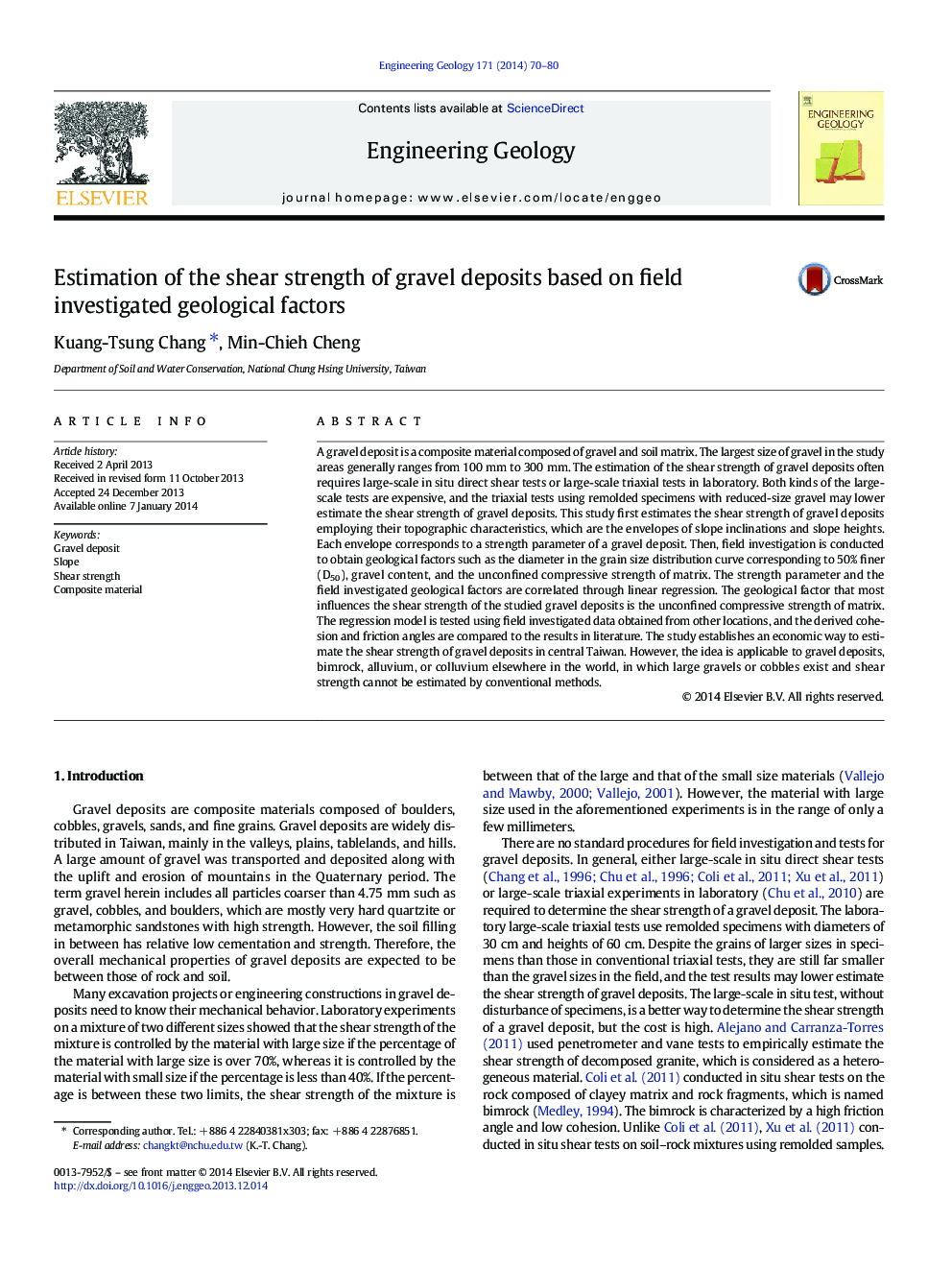| Article ID | Journal | Published Year | Pages | File Type |
|---|---|---|---|---|
| 4743615 | Engineering Geology | 2014 | 11 Pages |
•The envelopes of slope inclinations and heights of gravel deposits are investigated.•Each envelope corresponds to a strength parameter of a gravel deposit.•Gravel deposits are characterized as three geological factors.•Correlation between the strength parameter and the geological factors•Shear strength of a gravel deposit is estimated through the correlation.
A gravel deposit is a composite material composed of gravel and soil matrix. The largest size of gravel in the study areas generally ranges from 100 mm to 300 mm. The estimation of the shear strength of gravel deposits often requires large-scale in situ direct shear tests or large-scale triaxial tests in laboratory. Both kinds of the large-scale tests are expensive, and the triaxial tests using remolded specimens with reduced-size gravel may lower estimate the shear strength of gravel deposits. This study first estimates the shear strength of gravel deposits employing their topographic characteristics, which are the envelopes of slope inclinations and slope heights. Each envelope corresponds to a strength parameter of a gravel deposit. Then, field investigation is conducted to obtain geological factors such as the diameter in the grain size distribution curve corresponding to 50% finer (D50), gravel content, and the unconfined compressive strength of matrix. The strength parameter and the field investigated geological factors are correlated through linear regression. The geological factor that most influences the shear strength of the studied gravel deposits is the unconfined compressive strength of matrix. The regression model is tested using field investigated data obtained from other locations, and the derived cohesion and friction angles are compared to the results in literature. The study establishes an economic way to estimate the shear strength of gravel deposits in central Taiwan. However, the idea is applicable to gravel deposits, bimrock, alluvium, or colluvium elsewhere in the world, in which large gravels or cobbles exist and shear strength cannot be estimated by conventional methods.
